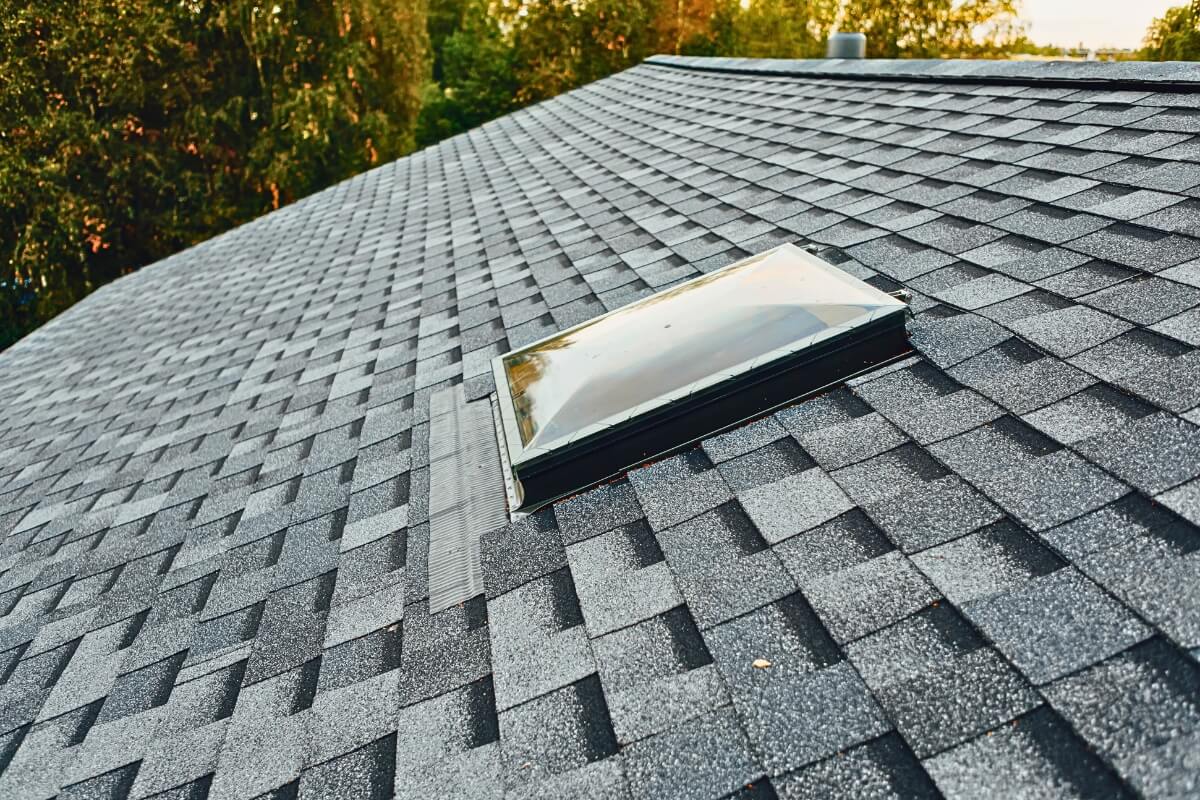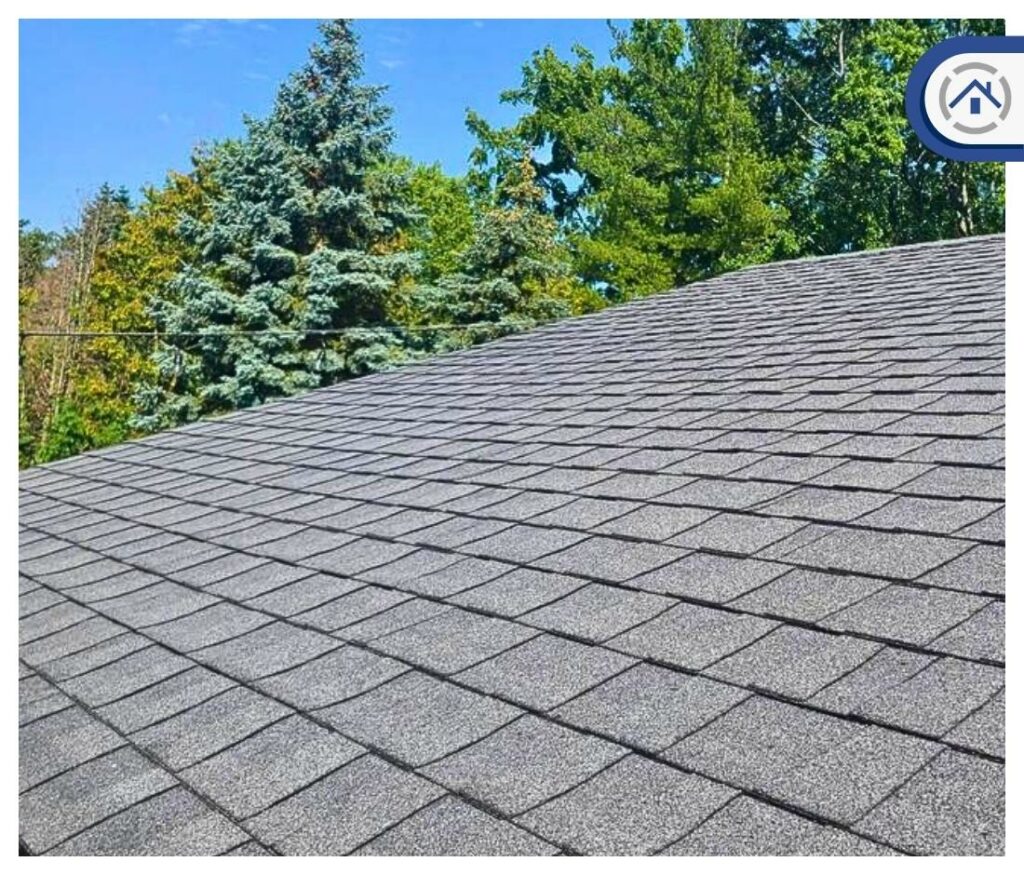
Did you ever question why most roofs are made of shingles? It's a valid inquiry, especially if you've spent any time exploring residential neighborhoods across North America. Shingle roofs are a ubiquitous sight, adorning homes from coast to coast. This prevailing choice in roofing material raises an intriguing question: What makes shingles the preferred option for so many homeowners?
In this blog, we'll explore the factors that have contributed to the widespread use of shingle roofs and the advantages they bring to the world of home construction.
When selecting a roofing material for your home, it's essential to consider its weight. The weight of the material affects the structural requirements of your roof and can also impact the cost of your roofing project. Heavier materials require stronger roof structures to support their weight, while lighter materials are appropriate for a broader range of roof designs.
1. Asphalt Shingles
These are relatively lightweight, making them one of the lightest roofing options. They typically weigh between 2 to 4 pounds per square foot.
2. Clay Tile Roofing
Clay tiles are considerably heavier than asphalt shingles. They can weigh around 6 to 12 pounds per square foot, depending on the tile thickness and style.
3. Concrete Tile Roofing
Concrete tiles are also quite heavy, similar to clay tiles. Their weight can range from 9 to 12 pounds per square foot, again depending on the thickness and style.
4. Metal Roofing
The weight of metal roofing materials can vary significantly depending on the type of metal and its thickness. Steel or aluminum roofing typically weighs around 1 to 4 pounds per square foot. However, heavier metals like copper and zinc can weigh between 5 to 10 pounds per square foot.
5. Wood Shingle or Shake Roofing
Wood shingles or shakes are heavier than asphalt shingles but lighter than many tile options. They typically weigh around 3 to 4 pounds per square foot.
6. Slate Roofing
Slate is one of the heaviest roofing materials. It can weigh anywhere from 7 to 20 pounds per square foot, depending on the thickness and type of slate used.
When choosing a roofing material, it is essential to consider both the upfront cost and the long-term cost-effectiveness. This involves evaluating various factors such as durability, maintenance, and energy efficiency to help you make an informed decision based on your budget and priorities. Moreover, it is crucial to note that the cost of different roofing materials may vary and depend on factors such as the location, complexity of the roof, labor costs, and any additional features or customization.
1. Asphalt Shingles
Asphalt shingles are one of the most cost-effective roofing materials. On average, they can cost between $3 to $5 per square foot (installed), making them a budget-friendly choice. It's worth noting that the costs can vary based on the shingle's quality.
2. Metal Roofing
Metal roofing comes in various types, such as steel, aluminum, and copper, and the cost can vary accordingly. On average, the cost of metal roofing can range from $7 to $12 per square foot (installed). While this is more expensive than asphalt shingles, metal roofs offer durability and a longer lifespan, which can provide long-term cost savings.
3. Wood Shingle or Shake Roofing
Wood shingle or shake roofing is generally more expensive than asphalt shingles, with an average cost of $6 to $9 per square foot (installed). The exact cost can vary based on the wood type and shingles style.
4. Clay Tile Roofing
Clay tile roofing is a premium option and is more expensive than asphalt shingles. On average, the cost can range from $10 to $15 per square foot (installed). Clay tiles are known for their durability and aesthetic appeal but come at a higher upfront cost.
5. Concrete Tile Roofing
Concrete tiles are a less expensive alternative to clay tiles but still cost more than asphalt shingles. On average, the cost can range from $7 to $10 per square foot (installed). They offer similar durability and aesthetic options.
6. Slate Roofing
Slate is one of the most expensive roofing materials. On average, the cost can range from $15 to $25 per square foot (installed). While the upfront cost is high, slate roofing is known for its exceptional longevity.
7. Cedar Shingle Roofing
Cedar shingle roofing is another premium option that is more expensive than asphalt shingles. On average, the cost can range from $7 to $10 per square foot (installed). Cedar shingles are prized for their natural beauty and durability.
8. Synthetic Roofing Materials
Synthetic roofing materials are available that mimic the appearance of more expensive options like slate or cedar. The cost varies but is generally more affordable than the authentic materials. Synthetic roofing materials can range from $4 to $12 per square foot (installed), depending on the type and brand.

Shingles are a popular roofing choice for several reasons, one of which is their minimal maintenance requirements. While they offer low-maintenance advantages, it's essential to note that their lifespan varies. Asphalt shingle roofs typically last 15-30 years. Regular inspections and proactive maintenance can further extend the longevity of a shingle roof. Several factors contribute to this low-maintenance characteristic:
1. Durability - Shingles, particularly asphalt shingles, are designed to withstand a range of weather conditions, including rain, snow, and wind. Their durability means that they don't deteriorate quickly, reducing the need for frequent repairs or replacements.
2. Ease of Repairs - When they require maintenance, it is often relatively straightforward. Individual damaged or missing shingles can be easily replaced without the need for extensive work on the entire roof. This ease of repair helps keep maintenance costs and efforts low.
3. Resistance to Algae and Mildew - Many modern shingles have protective coatings that resist algae and mildew growth. This feature reduces the likelihood of unsightly discoloration and staining, which can affect the appearance of the roof.
4. Regular Inspections - Regular inspections by homeowners or roofing professionals can catch potential issues early, preventing them from developing into more significant, more costly problems. Simple inspections for loose or damaged shingles and cleaning the gutters can help maintain the roof's integrity.
5. Affordability - Shingles are generally one of the most budget-friendly roofing options, not only in terms of installation but also in long-term maintenance. The reduced need for repairs and the low replacement cost of individual shingles contribute to cost-effectiveness.
6. Versatility - They come in a variety of styles and materials, allowing homeowners to choose options that best suit their preferences and the climate of their region. This adaptability ensures that shingles can perform well in various conditions.
7. Availability - Their replacement components are widely available, making it easier to source repair materials when needed.
Asphalt shingles offer homeowners a wide range of color options, which is a significant advantage. This variety of colors allows individuals to customize their roofing to suit their personal taste and architectural style and ensures that the roof blends seamlessly with the surrounding environment.
Apart from the visual appeal, the diverse color selection enhances the home's curb appeal and value, making it more attractive to potential buyers. Additionally, this flexibility fosters creativity, enabling homeowners to create a roof that perfectly complements their unique vision and design preferences, ultimately contributing to their homes' overall beauty and individuality.
The color options for shingles can vary depending on the manufacturer and product lines. However, here are some common color categories and examples that you might find when choosing asphalt shingles:
1. Neutral Tones - These classic and versatile colors blend well with various architectural styles and home colors. Examples include shades of gray, black, and white.
2. Earthy Tones - These colors are inspired by nature and offer warm, natural hues. Examples include brown, tan, and terra cotta.
3. Cool Blues and Greens - These colors can create a refreshing and tranquil look. Examples include shades of blue and green.
4. Vibrant Colors - For those who want to make a bold statement, some manufacturers offer vibrant colors like red, orange, or deep green.
5. Blends and Custom Colors - Many shingle manufacturers provide blends that combine several color tones in one shingle, creating a multi-dimensional effect. Some manufacturers even offer custom color options for homeowners who want a truly unique look.
Shingles are a popular choice for roofing due to their many benefits. They are cost-effective, require low maintenance, and come in various colors. Shingles offer aesthetic and practical advantages, enabling homeowners to match their roofs with their homes' architectural style and increase curb appeal. Although other roofing materials are available, shingles remain popular due to their durability, attractiveness, and customization options.
When it comes to roofing projects, seeking advice from experts and professionals is crucial. They can assist in making suitable material and design choices and ensure that the installation and maintenance processes are carried out to industry standards. This guarantees a roof that looks great, operates effectively, and lasts for a long time.